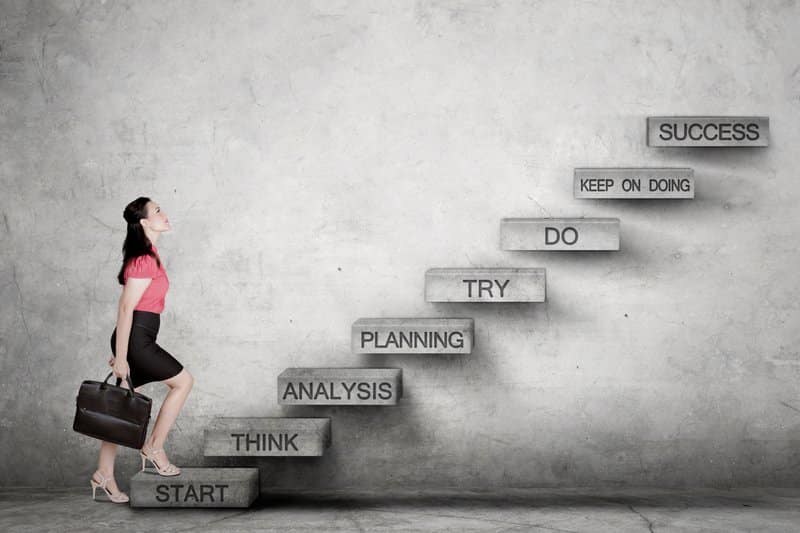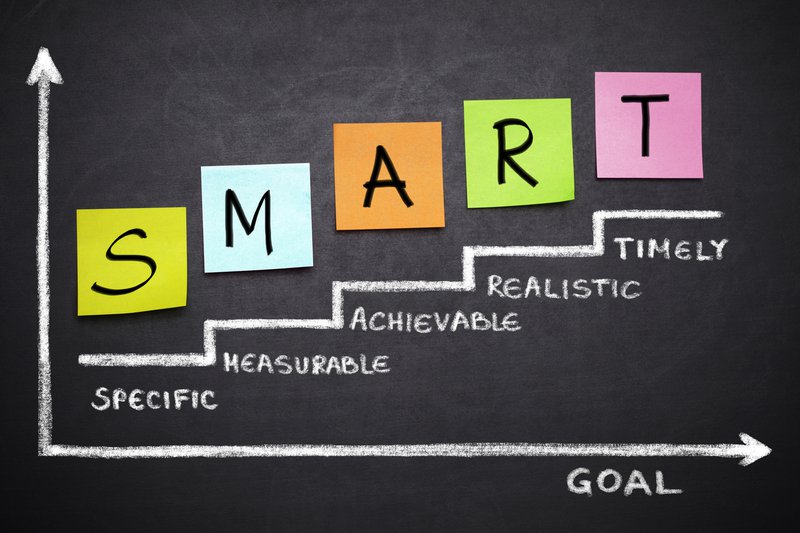What Is a Career Development Plan?
Do you envision yourself in a specific position someday in the future? The next department head? A great Marketing Manager? Or even the CEO someday? Unless you sit down, collect your thoughts, and start career development planning, these thoughts will remain wishful thinking. Devising a specific and thorough career development plan is the best way to get going.

First of all, let’s define a career development plan:
Career development o plan is a process that creates the professional life of a person. It helps professionals to customize their strategies to achieve their career goals. It is a crucial part of human development and influences the person’s whole lifetime, starting when the individual realizes that it’s time to start having a job. It’s the management of the person’s education, work, and leisure activities to achieve a desired professional and personal future.
Career development can affect the relationship between the employee and the company. The company wants to improve productivity, so making the employee develops as a professional will help reach this goal.
The organization will appreciate employees are managing their own careers and will support them to grow on their selected career paths.
Career Development Plan Steps
A career development plan starts from where you are now. It creates a step-by-step plan which ends with where you want to be at a particular time in your life. It helps clarify your goals and directs you along your career path towards your desired objectives. It’s a plan to list what kind of education or professional experience you need to reach your professional and personal goals.
Before you start sharpening your pencil and writing down a career development plan, you must do research and critical thinking to reach your goals. You need to go through some preliminary steps to help you draft the best possible path for a successful career in the shortest time possible. Here are seven things to work on for a career development plan.
A career development plan is divided into a few steps:
- Determine your field of interest.
- Identify your goals.
- Assess your position.
- Set SMART goals (what you’re going to do before and after reaching your goals).
- Identify your obstacles.
- Write down your plan.
- Evaluate from time to time and value the little milestones.
1) Determine Your Field of Interest
It might seem strange to jump straight to your interests while devising a career development plan, but it helps. It helps you clear your head of all the lingering confusion and makes it easier for you to develop as a professional with a clear vision of what kind of work you love.

The details depend on whether you want to make it specific or keep it broad. After all, it never helps to be too stern with what your primary career interest is. For instance, if you wish to become a PR professional, you can name the firms you want to work for and be flexible.
You can also list why you love and prefer a certain kind of work over another. It will help you in better sort things out in your head and eliminate any confusion that remains. It is one of the essential purposes of writing down a career development plan. The right plan can help you take charge of your career trajectory.
2) Identify Your Goals
Determining your overall goals gives direction and purpose to your career development planning. Making the right goals for the right reasons certainly gives you the desired results if followed with the right steps.
It differs from determining your field of interest, so try not to get confused. Goals are where you want to end up with the work you choose. And defining the area of interest is about looking within for answers in the affirmative.

Let’s see how to go about the former.
Make your goals as specific as possible. Narrow down your career goals to the kind of position you see yourself in, in an industry that suits your talent and experience. Particular goals make planning more specialized towards what you are aiming to achieve.
Set both long-term and short-term goals. The latter is quicker to achieve and gives a feeling of accomplishment, motivating the individual to move onto the next step. Asking yourself where you see yourself in 2 years lets you define the first step of the career development plan. But asking yourself where you see yourself in 10 years helps you create a direction in career development planning. It is through incremental changes (or steps) that a big difference is brought about.
Establish a goal that motivates you. Ask yourself why you want to accomplish these goals and why they are essential to you. It is easier to follow a career development plan which holds meaning to you and holds your interest.
Use SMART goals – specific, measurable, achievable, realistic, and time-related goals.
3) Assess Your Current Position
Review where you currently stand in your career. You need to figure out where you are relative to your goals. Ask yourself, are you in the right position leading you towards your objectives? Are you targeting a directory position? Are you planning to find a remote job? Do you have all the knowledge and skills to reach your goals?

It is exceedingly important as the entire effort of writing down and following a plan becomes obsolete if the progress isn’t steady and in the right direction.
Tally all your experiences, skills, and knowledge areas and determine their relevance to your career development goals.
Do a gap analysis to see the differences in the qualifications between where you are right now and your next step, or short-term goals shortly, as mentioned in your career development plan.
Have a look at your strengths and weaknesses in your work history and relate them to your chosen career.
4) Set the Timeline for Your SMART Goals
Just establishing SMART goals often results in overlooking them, so to eliminate chances of happening, you will have to add the before and after of all the short-term goals you’ve laid out for yourself.

Setting realistic timetables is also a great way to motivate yourself to invest more time and effort to accomplish the SMART goals mentioned in your career development plan.
Now you can go about it in the following way, and you can choose to mention the required steps that you think you have to accomplish these short-term goals. It will give you the direction you need to move on and help you navigate your way to that goal.
Don’t you want to reach these little summits and get clueless about what the fuss was about?
So, when deciding on your short-term goals, make sure they are like milestones to your larger goal. If your short-term goals aren’t related to your primary goal, the effort loses its importance.
The combination of steps on how to accomplish your short-term goals, the time you wish to achieve them, and the benefits of completing these short-term hurdles will make accomplishing them a lot easier if listed in a specific way for you.
5) Identify Your Main Barriers
Now, this part about your career development plan is the hardest to outline clearly.

You can choose to divide this part into two distinctive parts. The first part can be devoted to the barriers within you, i.e., your characteristics or habits that might come in your way. The second part can be devoted to the external obstacles you might face to achieve your short-term and long-term goals.
To make it a lot more detailed and planned, outline how to tackle internal and external barriers.
With internal obstacles, you can follow routines that can help you eliminate them or, at the very least, dilute them to the extent that they don’t pose a threat to your career progress.
With external barriers, you can make separate plans to tackle one by one after doing some research, which will also help you clarify your problem statements.
6) Write Down Your Career Development Plan
Your career development planning result is a concrete plan that describes the steps you need to take to reach your goal.

After some intense research of what you want and currently possess, you can create a workable plan. Consult with a mentor or manager to get a professional opinion on your career development plan.
Present the steps in the form of a timetable, indicating how and when to take each action.
Give plenty of breathing room to your plan by adding backup options and flexible dates and goals. You can’t expect everything to go exactly as planned, so keep it elastic and be open to changes brought about by unforeseen elements.
Check up on your plan every six months to stay on track. It will let you revise the process if necessary and keep you focused on what to do.
7) Evaluate From Time to Time and Value the Little Milestones
Your career development plan is not like some scripture that believers follow. You can make changes and have your cheat days and rest hours.

You don’t have to be in a relentless pursuit of your goals. Whenever you accomplish a little milestone, give yourself a short time off, and value your short-term accomplishment.
After all, you have to be fresh throughout your journey to success. It is the only way you can both enjoy it and increase your productivity with every passing day.
Why Is a Career Development Plan Necessary?
Writing down a career development plan helps you visually understand how to get from point A to point B. After all, it is quite motivating to look at your plan from time to time and see where you stand on your career ladder. It is also necessary to look back on how much ground you have covered to get where you are today.
The career development planning process is beneficial to individuals looking to reach a certain point in their professional life. Creating a career development plan will allow you to have a straightforward guide on how and when to get there.
When done with proper attention, a career plan keeps the focus and drive towards one’s goals. Sparing only a small portion of your time on career development planning can reap significant returns in your future.

Christian has over ten years of experience in marketing agencies. Currently, he has been dedicating his time to a tech startup and also writing for major publications. He loves podcasts and reading to keep up with the latest trends in marketing.

Very good approach in CDP journey
Thank you!
Thank you for sharing such important information. It will be very useful for us in future. Good keep it up and keep writing.
Thanks, Amanda!
After reviewing the 7 steps I gathered a lot of information.
I’m glad you liked it, Elias.
I learned a lot from this reading.
Great to hear Jacob! Thanks for the note!
A career development plan is important because it helps individuals identify their career goals, create a roadmap to achieve them, and stay focused and motivated. It also helps organizations retain top talent by providing opportunities for employees to learn, grow, and advance within the company.
Talent retention is a great point. Check these articles if you have the chance:
– Retention bonus
– Talent Pool
A career development plan is a roadmap that outlines an individual’s career goals, skills, strengths, weaknesses, and action steps for achieving their desired career outcomes. To create an effective career development plan, individuals should start by assessing their current skills and qualifications, and identifying areas for growth and development. They should then set clear, measurable goals that align with their long-term career aspirations. Next, individuals should create a plan of action, including specific steps for achieving their goals and timelines for completion. They should also identify potential obstacles or challenges and develop strategies for overcoming them. Finally, individuals should regularly review and update their career development plan to ensure that they are making progress toward their goals and adapting to changes in their career path or industry. By following these steps, individuals can create a clear, actionable plan for achieving their career objectives and advancing their professional growth and development.
Thanks for the detailed comment!